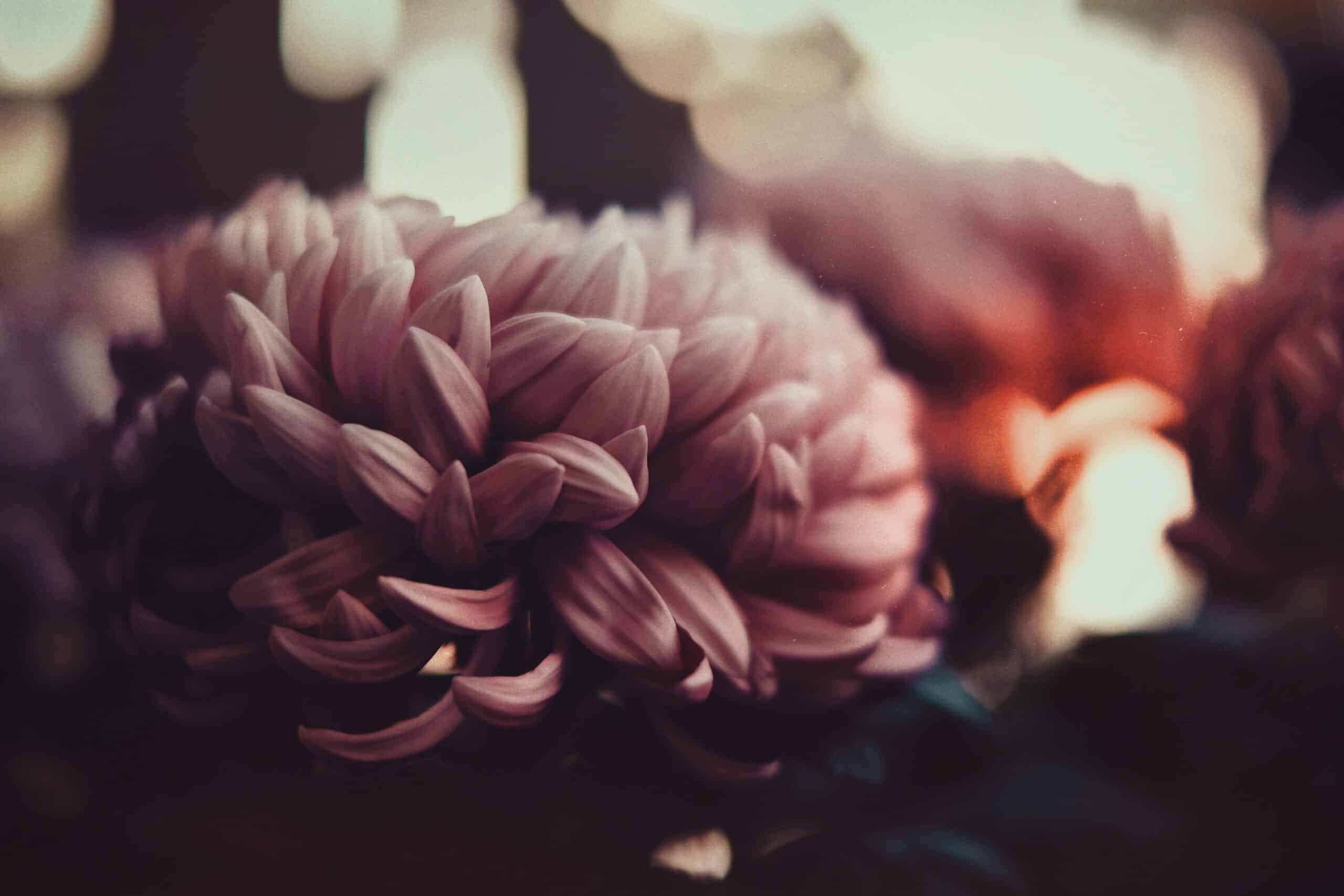Chrysanthemums, also known as garden mums, are beautiful staples of the garden with bright colors and a long blooming period. Hardy chrysanthemums are particularly attractive due to their low-maintenance requirements and cold hardiness. As such, they are an ideal choice for those looking to add vibrant colors to their garden without much fuss. In this article, we will provide detailed instructions on how to grow these hardy plants so that you can enjoy their beauty in your own garden.
Growing hardy chrysanthemums can be a rewarding experience when done properly. These plants thrive in cool temperatures and need well drained soil and full sun exposure for optimum growth. They are generally pest free but may require occasional pruning for size control or removal of diseased branches. It is important to note that some varieties may be sensitive to high temperatures or humid climates and may require extra care or protection from extreme weather conditions.
With proper planting and maintenance techniques, you can create an eye-catching display of colorful blooms in your garden. We will discuss the best methods for planting these hardy mums, as well as tips on fertilizing, mulching, watering, pruning and disease prevention so that you can successfully cultivate them at home. So if you’re ready to learn more about growing hardy chrysanthemum plants in your landscape, read on!
Choosing The Right Variety Of Hardy Chrysanthemum
Selecting the right variety of hardy chrysanthemum (garden mum) is key to successful cultivation. With so many varieties available, understanding the specific characteristics of each will help ensure you get the most out of your garden mums. All mums can be divided into two categories: woody and herbaceous. Woody mums are winter hardy and require cold temperatures to produce their signature blooms come fall, whereas herbaceous mums are spring-planted, more tender, and flower in late summer or early fall before dying back in winter.
When selecting a variety, consider its color, size, shape and bloom time. Hardy chrysanthemums come in a wide array of colors including white, yellow, orange, purple and pink. Some varieties have single flowers while others have double ones; some have fully double petals while others are partially so. Many varieties reach heights of 1–2 feet while others can reach up to 6 feet tall or more! The bloom time of each variety is also important – some flower as early as late August while others may not start blooming until October.
With careful consideration of all these factors, you’ll be able to select a hardy chrysanthemum that will provide beauty for your garden for years to come! From vivid hues to diverse shapes and sizes, there’s something for every garden – no matter what your style. With the right selection and preparation you can enjoy gorgeous fall blooms from your hardy mums season after season!
Planting Hardy Chrysanthemum In The Garden
Given the right conditions, chrysanthemums can be a stunning addition to any garden. But when it comes to planting hardy mums in the open ground, it’s important to understand how best to get them off to a good start. With that in mind, let’s explore what you need to know when planting hardy chrysanthemums in the garden.
When planting hardy mums in the garden, there are a few key points to keep in mind. Firstly, select an area of your garden which receives at least six hours of sun each day and has well-drained soil. Planting hardy mums too deeply can cause them to rot; so make sure to plant them at the same depth as they were growing in their container. When spacing plants, use 8-12 inches between each one for optimal growth.
Once planted, water your hardy mums thoroughly and apply a layer of mulch around their base; this will help retain moisture and reduce weeds. Additionally, feed your mums with an organic fertilizer such as compost or manure tea once or twice during the season for best results. Finally, don’t forget to trim back your plants regularly throughout the season; this will help encourage new growth and denser blooms!
With these tips on planting hardy chrysanthemum in the garden, you’re now ready to take on the next step: growing them in containers!
Planting Hardy Chrysanthemum In Containers
For those looking to spruce up their gardens with a showy burst of color, Hardy Chrysanthemum (Garden Mums) are the perfect choice! With a wide range of colors, sizes, and shapes, these hardy beauties are sure to turn heads and wow your neighbors. However, if you don’t have the space or resources to dedicate an entire garden bed to them, fret not: Hardy Chrysanthemums can also be planted in containers without compromising their growth!
As any horticulturist will tell you, container gardening requires careful consideration of certain key factors in order to ensure healthy growth. First and foremost is the size of the container; when planting Hardy Chrysanthemums in a pot or other vessel, choose one that is at least 12 inches deep and 12-18 inches wide. Be sure that it has adequate drainage holes as well, as proper drainage is essential for preventing root rot. Secondly, use a quality potting soil mix that contains ample amounts of organic matter; this will help the roots absorb nutrients more effectively and keep them properly hydrated.
Finally – and perhaps most importantly – make sure you provide your Hardy Chrysanthemums with plenty of sunlight! An ideal position would be somewhere that receives at least 6 hours of direct sunlight each day; however if your garden doesn’t receive enough light for this purpose, supplementing with artificial lighting may also do the trick. And there you have it: armed with these tips on planting Hardy Chrysanthemums in containers, you’re now ready to enjoy their spectacular blooms throughout the summer months!
Preparing The Soil For Planting Hardy Chrysanthemum
The cultivation of hardy chrysanthemum, or garden mum, is a labor of love that can bring excellent rewards if done correctly. To ensure success in growing these plants, the correct soil preparation is essential. We will examine the theory that this preparation is key to raising healthy mums and explore ways of achieving it.
When planting hardy mums, the soil must be well-drained yet moist enough to sustain the plants while they are establishing themselves. It should also be amended with organic material such as compost or manure. This will add nutrients to the soil and help create a more hospitable environment for your mums. If you have poor quality soil, adding a balanced fertilizer may also be beneficial.
Achieving ideal soil conditions for hardy chrysanthemum does take some effort but it can pay off handsomely when you see your plants thriving in their new home. Regular testing of pH levels and nutrient levels will allow you to make adjustments as needed for optimum results. Additionally, working mulch into your planting beds can help retain moisture during periods of drought.
With these steps taken care of, we now move on to discussing how best to water hardy chrysanthemum plants so they flourish in their new environment…
Watering Hardy Chrysanthemum Plants
Watering is an important part of cultivating hardy chrysanthemums. Generally, hardy chrysanthemums require a moderate amount of water, but excessive amounts can cause root rot and other diseases. Here are some tips for watering your hardy chrysanthemum plants:
• Water the plants at their base and avoid wetting the foliage to prevent disease. • Make sure you provide enough water so that the soil is moist but not soggy. • Monitor the soil moisture and adjust watering frequency as needed, especially during dry spells.
It’s also important to note that most garden mums are drought tolerant, so be mindful not to overwater them. Mulching around the base of the plants can help retain moisture and reduce evaporation from the soil surface. Additionally, when planting in containers, use a potting mix formulated for container gardening which will hold more moisture than ordinary garden soil or compost.
Finally, pay attention to your plants’ water needs throughout their growing season as this can have a significant impact on their performance. Proper watering will ensure your hardy chrysanthemum plants are healthy and productive all season long.
Fertilizer Requirements For Hardy Chrysanthemum
Fertilizing hardy chrysanthemum plants is like feeding a beloved pet – it gives them the nutrients they need to thrive and bloom. With this in mind, there are several key points to consider when fertilizing your mums:
First, you’ll need to determine the best type of fertilizer for your plants. An organic fertilizer will provide the best results with mums as it helps promote healthy and abundant blooming. Additionally, using a slow-release fertilizer that’s specifically formulated for hardy mums will give them an added boost throughout the growing season.
Second, you’ll want to tailor your fertilization schedule to your particular climate and soil condition. If you live in a warmer area, you may want to fertilize more often than if you live in a cooler one. You can also adjust your frequency based on how much rainfall or irrigation is available in your area.
Finally, it’s important to apply the right amount of fertilizer at each application. Too little won’t provide enough nutrients and too much can burn the plant roots and cause damage. A good rule of thumb is to use half of what is recommended on the package instructions. By following these guidelines, you’ll be well on your way towards giving your hardy chrysanthemum plants just what they need for a healthy growth cycle!
Pinching And Pruning Hardy Chrysanthemum
Pruning and pinching your hardy chrysanthemum is the key to a successful plant. It can help the plant branch out, become more bushy and produce more flowers. But how do you go about it? Here are three tips to get you started:
First, prune off any dead or damaged stems of your hardy chrysanthemum. This will encourage better air circulation within the plant and allow for more light penetration as well. Doing this also removes diseased parts of the plant so that they don’t spread infection throughout the garden mum.
Second, pinch off any shoots that grow from the top of the main stem. This technique encourages lateral growth and helps create a bushier appearance in your garden mum. This will aid in having more blooms on display come flowering time!
Lastly, cut off faded flower heads as soon as possible to avoid them going to seed. Doing this will also force new blossoms to form so that you can enjoy a beautiful display of blooms all season long. With these tips in mind, you’ll be able to properly prune and pinch your hardy chrysanthemum for maximum bloom potential!
Now that we have gone over how to prune and pinch hardy chrysanthemums, let’s move on to controlling pests and diseases.
Controlling Pests And Diseases On Hardy Chrysanthemum
Controlling pests and diseases on hardy chrysanthemum is essential to ensure their healthy growth. As the weather warms, keep an eye out for signs of insect or disease damage. Aphids, spider mites, and whiteflies are some of the most common insects that can cause damage to mums. To control these pests, use a systemic insecticide such as neem oil or pyrethrum. If you see signs of fungal diseases such as powdery mildew or rust, treat the plant immediately with a fungicide. Always read and follow product labels carefully when using any type of pesticide.
Be sure to remove any infected or dead leaves from the plant quickly to help reduce the spread of infections and further damage. Also, avoid overwatering your mums as too much moisture can encourage the development of fungal diseases. Maintaining good air circulation around your plants is also important for keeping them healthy and free from pests and diseases.
Keep in mind that prevention is always better than cure when it comes to controlling pests and diseases on hardy chrysanthemum; following best cultural practices such as mulching around your plants can go a long way in helping keep them healthy. Pruning away spent blooms regularly will also help maintain their vigour by encouraging new growth and keeping them looking their best all season long.
Deadheading Hardy Chrysanthemum Blooms
A stitch in time saves nine, and the same is true when it comes to deadheading hardy chrysanthemum blooms. As a specialist in botany and gardening, I’m here to tell you that regular deadheading of your mums is an essential part of caring for them. Not only will this practice help them look their best, but it can also promote better blooming and keep pests away.
Deadheading is the process of removing spent blooms from plants. It encourages more flowers by preventing the plant from expending energy on producing seeds. It also helps prevent diseases caused by fungi or bacteria that can take hold in old flower heads. To deadhead your mums, simply use pruners or scissors to cut off old flowerheads at their base. Be sure to wear gloves when doing so as the stems may be sharp.
Deadheading also keeps your plants looking tidy and can help control pests like aphids or spider mites which are attracted to old blooms. By regularly removing spent flowers, you’ll help keep these pesky insects away from your garden mums! With this simple practice, you’ll enjoy beautiful blooms all season long while ensuring your plants stay healthy and vibrant.
Overwintering Hardy Chrysanthemum
The hardy chrysanthemum is a symbol of strength and resilience. It’s important to understand the basics of overwintering this flower in order to keep it looking its best year after year. Here are some tips for successfully overwintering your mums:
• Plant in a sheltered location so wind won’t cause damage • Mulch thickly around the base to provide insulation throughout the winter months • Cut back flowering stems, but leave foliage intact
As a botany specialist and gardening enthusiast, I highly recommend these steps for overwintering hardy chrysanthemums. Planting in an area that’s shielded from strong winds can help protect them from cold temperatures, while mulching heavily around their base will help insulate them and maintain adequate moisture levels during colder months. Additionally, cutting back spent blooms will ensure that the roots remain healthy and vigorous over the winter.
Now that we’ve discussed how to correctly overwinter hardy chrysanthemums, let’s move on to propagating them!
Propagating Hardy Chrysanthemum
Let’s take a closer look at propagating hardy chrysanthemum, the beautiful and low-maintenance flowering plant. Imagine a garden full of vibrant, cheerful mums dancing in the breeze! Propagation is the process of multiplying or increasing your garden mum plants from existing plants. There are several methods to propagate these hardy plants and it’s not too difficult for even beginning gardeners.
The most common propagation method for mums is through division. In early spring, dig up the entire plant and divide it with a sharp spade into sections with three to five stems each. Replant each section into prepared soil and water well; within weeks you’ll have new gardens mums ready for your landscape! For those looking for an even easier approach, stem cuttings are an ideal solution. Cut off 6-12 inch stem tips with a sharp knife and remove any leaves on the lower half of the stem. Place them upright in moistened sand or other rooting medium, water regularly and they should root in 4-6 weeks – no digging required!
For those looking to increase their supply of these gorgeous flowers more quickly, tissue culture can be used successfully with mums as well. Plant tissue is grown in sterile conditions on nutrient agar plates containing hormones that stimulate rooting and growth; after several months seedlings will be ready to transplant into soil or pots. With its simple propagation methods, anyone can easily grow hardy chrysanthemum for their own pleasure or to share with family and friends!
Using Hardy Chrysanthemum In Landscaping
It is widely accepted that landscaping with hardy chrysanthemums can add a splash of much-needed vigor and color to any outdoor space. But is it really possible to use these versatile blooms for landscaping purposes? Research suggests that the answer is yes, and this article will explore the ways in which hardy mums can be utilized to create beautiful landscapes.
Firstly, hardy chrysanthemums are highly adaptable and come in a variety of colors and sizes, making them ideal for adding vibrancy to any garden or outdoor area. Furthermore, they are drought-resistant and can survive in temperatures as low as -20°F, so they are well-suited for cold climates. Their long-lasting blooms also provide an extended period of color from late summer through fall.
In addition, they require minimal maintenance compared to other flowers, only needing occasional pruning and deadheading throughout the growing season. They are also great additions to containers or window boxes as they do not require frequent watering like many other plants do. Moreover, when planted in groups, they make excellent border plants or ground covers due to their dense habit and ability to fill empty spaces quickly.
With all of these benefits combined, hardy chrysanthemum is certainly an attractive option for landscaping projects of any scale. From providing vibrant colors during cold winters to filling empty spaces without requiring intensive care – there’s no denying that these resilient blooms have much to offer your garden!
Harvesting Hardy Chrysanthemum
Harvesting hardy chrysanthemums is a rewarding experience. These plants can be harvested for bouquets, dried flowers or for use in potpourri. In order to harvest these mums, it’s important to know when they are at their peak of bloom. The best time to harvest is when the buds have just opened and the petals are still taut, but not starting to show signs of age and wilt. If you plan on using your chrysanthemums as cut flowers, it’s important to cut them late in the afternoon on a sunny day and immediately place them in water.
The blooms should be removed from the plant using pruning shears or scissors that have been sterilized with rubbing alcohol. Cut stems should be a minimum of six inches long and should include some foliage below the bloom itself. Make sure that you leave enough foliage on the stem to support the flower until it’s used in a bouquet or other arrangement. Once cut, place the stems in warm water and add floral preservative if desired. This will help keep your chrysanthemums looking their best for longer periods of time.
To dry your hardy chrysanthemum flowers, wait until there are no more buds that are ready to open on each stem before cutting them off and hang them upside down in a well-ventilated location away from direct sunlight for about two or three weeks until completely dry. You can then bundle them together with twine or ribbon and store them in an airtight container until you’re ready to use them as decorations or accents within potpourri arrangements. By harvesting hardy chrysanthemums at their peak bloom period and following these simple steps, you’ll be able to enjoy their beauty for much longer. Moving forward we’ll explore how to arrange these beautiful blooms into bouquets for special occasions or simply as an elegant home décor accent piece.
Arranging Hardy Chrysanthemum In Bouquets
Have you ever wondered how to arrange a beautiful bouquet of hardy chrysanthemum? As a specialist in botany and gardening, I’m here to tell you that creating a stunning arrangement of these gorgeous blooms is not as difficult as one might think.
To begin, select some freshly cut stems of hardy chrysanthemum. You’ll want a combination of flowers with different lengths so that the final arrangement looks balanced and full. Start with the longest stems first, placing them into your vessel in an outward-facing direction from the center. This will give your bouquet a nice shape and depth. Make sure to cut off any leaves or foliage that may be below the water line in order for the flowers to have adequate hydration throughout their lifespan.
Next, start adding shorter stems around the perimeter of your vessel, filling out any gaps and making sure they are placed at different angles to create an interesting arrangement. If possible, try mixing in some filler plants like eucalyptus or baby’s breath for added texture and dimension. Finally, use some floral tape or ribbons to tie off the ends of your bouquet for a polished look.
With just a few simple steps, you can easily create beautiful arrangements of hardy chrysanthemum for any occasion! These beautiful blooms are sure to make an eye-catching statement and bring joy to those who receive them.
Common Questions About Growing Hardy Chrysanthemum
Growing hardy chrysanthemum is like a journey, with its ups and downs, but the end result of a beautiful flower makes it all worth it. As a specialist in botany and gardening, I am here to help guide you through these common questions about growing this flower.
First and foremost, one should ask: What kind of soil is best for growing hardy chrysanthemum? The answer is moist but well-drained soil that has a pH level between 6.0 and 7.0. This will provide the necessary nutrients for the mums to grow abundantly.
Second, how much sun does hardy chrysanthemum need? They prefer full sun for at least six hours per day; however, they can tolerate some shade if needed. Keep in mind that too little sunlight can cause the plants to become spindly and not produce many flowers.
Finally, how do you care for hardy chrysanthemum once they are planted? Watering regularly helps keep the soil moist while fertilizer will provide additional nutrients to keep them healthy and blooming longer. Deadheading spent blooms will also encourage new growth throughout the season. With proper care and maintenance, these mums will put on an amazing show of color every year!
Frequently Asked Questions
What Is The Best Time Of Year To Plant Chrysanthemums?
The best time of year to plant chrysanthemums, also known as garden mums, is one of the most important decisions for any gardener. If you’re looking for a way to bring color and life to your garden, hardy mums are an excellent choice for late summer and fall blooms. Allusion: As Emily Dickinson once wrote, “Hope is the thing with feathers that perches in the soul” – and so too do these hardy flowers come alive in our gardens when we give them a chance.
In order to get the most out of your mums, it’s essential to understand the seasonal timeline of planting. Planting should be done in early spring while temperatures are still cool. This allows the plants time to become established before hot summer weather arrives. When choosing a planting site, make sure to select an area with well-draining soil and full sun or partial shade exposure throughout the day.
When caring for your new mums, keep in mind they will need regular watering until they have fully established their root systems. Additionally, fertilizing every few weeks can help give them a boost during their first growing season. Pruning back stems after flowering can also help encourage additional blooming later in the season.
By following a few simple steps each season, it’s easy to ensure that your garden mums will thrive year after year – making them an ideal choice for brightening up any outdoor space! With just a bit of care and attention these beautiful flowers can bring lasting joy – not only to our gardens but also our souls.
How Much Sun Do Chrysanthemums Need?
When it comes to growing hardy chrysanthemums (garden mums), understanding the amount of sunlight they need is key to their success. One would think that these delicate flowers would want plenty of sun, but ironically, they actually prefer some shade. Botany and gardening specialists agree that chrysanthemums thrive the best when they get several hours of morning sunlight with afternoon shade. Here are a few tips to ensure your mums get the right amount of sun:
- Plant your mums in an area with morning sun and afternoon shade.
- Ensure that your garden receives at least 6-8 hours of direct sunlight every day.
- Keep an eye on the temperature; if it gets too hot during the hottest part of the day, find a spot with more shade or move your plants to a cooler location.
- Make sure there is good air circulation around the plant to prevent overheating and wilting in full sun conditions.
Chrysanthemums are one of those flowers that do not require intense amounts of light and can easily adapt to partial shade conditions as well as full sun ones. Despite this flexibility, however, you should still be mindful of how much sunlight they receive throughout the day in order to ensure their health and longevity in your garden. With proper care and attention, you can enjoy these beautiful blooms for many seasons to come!
How Often Should I Water Chrysanthemums?
Have you ever wanted to grow gorgeous hardy chrysanthemums (garden mums) in your garden? They make a great addition to any outdoor space and are sure to bring beauty and life to the area. But, how often should you water these plants in order for them to thrive?
As a specialist in botany and gardening, I can tell you that the frequency of watering required by chrysanthemums depends on multiple factors. For instance, the amount of rainfall your area receives is an important factor as it can help determine how much additional water needs to be provided by you. Similarly, temperatures also play an important role – if it’s hot and dry outside then more frequent watering may be necessary in order for them to grow healthy and strong.
It’s best to check the soil regularly near the roots of the plants in order to find out whether they need water or not. If the soil feels dry about two inches deep then it’s time for watering; otherwise, wait a few days before checking again. You should also aim for deep but infrequent watering rather than shallow but frequent watering – this will encourage deeper root growth which is beneficial for your mums’ overall health.
Overall, it’s best to keep track of weather conditions and soil moisture levels in order to determine how often you need to water your hardy mums so that they remain healthy and vibrant throughout their growing season!
What Type Of Fertilizer Should I Use On Chrysanthemums?
When it comes to fertilizing chrysanthemums, there are a few important factors to consider. First and foremost, the type of fertilizer you use is going to depend on the specific requirements of your plant. If you’re growing hardy mums in your garden, then it’s best to use a slow-release fertilizer that contains nitrogen, phosphorus, and potassium in equal amounts. This will help promote strong root growth and give the plants the nutrients they need for optimal growth.
You should also keep in mind that chrysanthemums require different amounts of fertilizer depending on when they are planted and how much sun they get throughout the season. For example, if you’re planting your mums in early spring or late summer to get a fall bloom, then you’ll want to use a higher nitrogen fertilizer than if you were planting them during the summer months. Furthermore, plants that receive more direct sunlight may need additional fertilizer during their growing season.
To ensure proper fertilization of your chrysanthemums, it’s important to follow the instructions on any fertilizer products you purchase and apply them at appropriate intervals throughout the season based on your plants’ needs. Additionally, be sure to test your soil periodically so that you know what nutrients may be lacking and can make adjustments accordingly. With proper care and attention, hardy mums can thrive in any garden!
What Are The Benefits Of Growing Hardy Chrysanthemums?
Hardy chrysanthemums, also known as garden mums, are a popular choice for gardens due to their ability to flower in the cooler months of fall and winter. A case study example of this is the University of Florida’s ornamental horticulture department which recently implemented hardy mums in their botanical garden’s landscape. These plants are not only attractive and colorful but they also provide numerous benefits to gardening enthusiasts.
Firstly, hardy chrysanthemums are very low maintenance plants that require minimal care. They don’t require much fertilizer or pruning, making them ideal for beginner gardeners who may not have the time or skill needed to upkeep more demanding plants. Additionally, these plants are very cold tolerant so they can easily survive harsh winters without any extra protection or specialized care.
Another great benefit of growing hardy chrysanthemums is that they attract beneficial pollinators such as bees and butterflies to your garden which helps improve the overall health of your outdoor space by encouraging natural biodiversity. Furthermore, these flowers bloom for long periods of time and often come in an array of vibrant colors that will bring life and character to any outdoor area.
Lastly, hardy chrysanthemums can be used both indoors and outdoors for cut flower arrangements or simply as part of your garden decor. Their beauty and versatility make them excellent additions to any home or business setting as well as a great way to add texture and dimension to existing landscaping features. With their impressive performance under all types of weather conditions, it’s no wonder why hardy mums have become one of the most popular choices among gardeners everywhere!
Conclusion
Conclusion: Chrysanthemums, also known as garden mums, are a beautiful and hardy flower that can add color and beauty to any garden. With proper care, they will thrive in most gardens and can provide years of enjoyment. The best time to plant these flowers is in late summer or early fall when they have the chance to establish strong root systems before winter sets in. They require plenty of sunlight and should be watered regularly but not over-watered; using a fertilizer specifically designed for chrysanthemums will help them flourish.
Growing hardy chrysanthemums provides many benefits, from adding vibrant colors to your garden to making it easier to maintain than other types of flowers. Their tough blooms will last through the winter and bring cheer with their bright petals throughout the colder months. Furthermore, their versatility allows for creative planting options with different shapes and sizes available. Plus, these resilient flowers make a great addition to any bouquet!
By taking the time to learn about how to properly care for these stunning plants, you’ll be rewarded with long lasting beauty that will enhance your outdoor space year round. From selecting the right time of year to plant them and providing adequate sun exposure and water, you’ll be able to enjoy the fruitful results of growing hardy chrysanthemums!





























